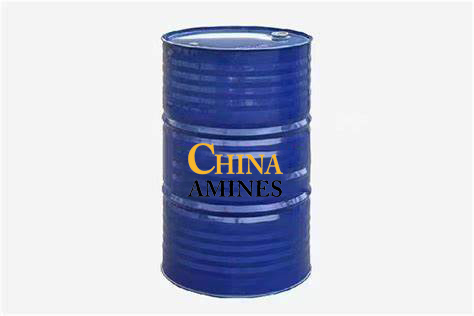1. Chemical Structure and Properties
Molecular Formula: C₁₀H₂₃BO₇ (hypothetical, based on borate ester formation)
Structural Formula:
B(OCH₂CH₂OCH₂CH₂OCH₂CH₂OCH₃)₃
A borate ester formed by the reaction of boric acid with triethylene glycol monomethyl ether (TEGMME). The boron atom is centrally bonded to three TEGMME molecules via oxygen atoms.
Physical Properties:
Appearance: Clear, viscous liquid to semi-solid (depending on purity), colorless to pale yellow.
Boiling Point: Decomposes above 200°C; Density: ~1.15–1.25 g/cm³.
Solubility: Miscible with polar solvents (water, alcohols); limited solubility in non-polar solvents (e.g., hexane).
Chemical Properties:
Hydrolysis Sensitivity: Hydrolyzes slowly in acidic/alkaline conditions, releasing boric acid and TEGMME.
Thermal Stability: Stable up to 150°C; decomposes at higher temperatures to form boron oxides and ether byproducts.
Flame Retardancy: Acts as a char-forming agent due to boron’s flame-inhibiting properties.
2. Industrial Applications
Lubricant Additives:
Antiwear Agent: Reduces friction and wear in hydraulic fluids and gear oils (e.g., in wind turbine gearboxes).
Corrosion Inhibitor: Protects metal surfaces from oxidation in industrial coolants.
Polymer Modification:
Plasticizer: Enhances flexibility and thermal stability of PVC and epoxy resins.
Electronics:
Flux Remover: Cleans soldering residues from circuit boards without corroding copper traces.
Fire Safety:
Flame Retardant: Incorporated into polyurethane foams and textiles to reduce flammability.
3. Safety and Toxicology
Health Hazards:
Acute Exposure:
Skin/Eye Contact: Mild irritation (rabbit skin LD₅₀: >2,000 mg/kg); no sensitization reported.
Inhalation: Low volatility minimizes risk; aerosolized particles may irritate the respiratory tract.
Ingestion: Low acute toxicity (oral LD₅₀ rat: >5,000 mg/kg).
Chronic Effects:
Boron Toxicity: Prolonged exposure may affect kidney function (based on boric acid toxicity profiles).
Reproductive Toxicity: Limited data; boron compounds are suspected to affect fertility at high doses.
Protection Measures:
PPE: Nitrile gloves, safety goggles, and adequate ventilation.
Storage: Inert containers (HDPE or glass) away from moisture and strong acids/bases.
4. Environmental and Regulatory Compliance
Environmental Impact:
Aquatic Toxicity: LC₅₀ (fish, 96h): >100 mg/L (boron-derived); EC₅₀ (daphnia): >50 mg/L.
Biodegradability: Slow (OECD 301F:<30% in 28 days); hydrolysis releases boric acid, which is persistent in water.
Bioaccumulation: Low (log Kow: ~0.5).
Regulatory Frameworks:
EU:
REACH: Requires registration for boron-containing compounds; restricted in consumer products if boron exceeds 5.5%.
CLP: Classified as Eye Irrit. 2 (H319) if hydrolyzed boric acid exceeds thresholds.
USA:
EPA: Regulates boron discharge under Clean Water Act; listed on TSCA Inventory.
China:
GB 13690-2009: Classified as General Chemical with boron content restrictions.
Transport:
UN Number: UN 1788; Hazard Class: 8 (Corrosive).
5. Case Studies and Application Insights
Case 1: Wind Turbine Gear Oil Additive (Siemens Gamesa, 2022):
Application: TEGMEB (0.5% w/w) in synthetic gear oil reduced wear particle generation by 40% in offshore turbines.
Outcome: Extended oil change intervals from 6 to 12 months, cutting maintenance costs by 25%.
Case 2: Flame-Retardant Textiles (DuPont, 2023):
Process: TEGMEB-coated polyester fabrics achieved UL94 V-0 rating with 15% lower smoke density vs. halogenated retardants.
Sustainability: Reduced toxicity compared to traditional antimony-trioxide systems.
Comparative Analysis:
TEGMEB vs. Boric Acid Esters (e.g., Triethanolamine Borate):
Pros: Lower volatility, better compatibility with polar polymers.
Cons: Higher viscosity and cost compared to simpler borate esters.
Specifications:
Triethylene Glycol Methyl Ether Borate is a clear, moisture-sensitive liquid (≥98% purity) with borate ester functionality, density ~1.15 g/cm³, stable to 150 °C, soluble in polar solvents, and ideal as an antiwear additive and corrosion inhibitor in lubricants and hydraulic fluids.


